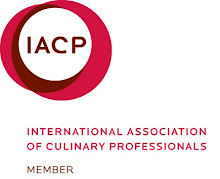
I've always loved bananas and eat one or more a day. They go against my goal to always eat sustainably and locally, but it's one of the exceptions I make. If bananas were ever in season in Italy I'd wait patiently, but they aren't. So I eat them a lot, all year round.
Lately I've been trying to make ice creams that recall something sweet and delicious that I love. Banana bread is one of these things, but it's only recently, thanks to Cook's Illustrated, that I now make a perfect banana bread.
My approach to ice cream (in this case banana) is to look at the ingredients in banana bread and try to use them in my ice cream. Bananas have to be over-ripe to achieve a rich banana flavor, but Cook's Illustrated takes this one step further. They suggest microwaving the bananas for five minutes and then using a fine mesh strainer to separate out the banana juice. The banana juice is then cooked until it is reduced by half and added back to the bananas. What you achieve is a deeper, richer banana flavor and a banana bread that is much lighter. I used this same approach in my ice cream and it worked divinely.
Ingredients:
- Over-ripe bananas (black and soft), peeled and mashed - 2 1/2 cups, about 6 bananas (600 grams)
- Cream, 1/2 liter
- Sugar, 1/2 cup ( 100 grams)
- Eggs, two whole
- Toasted pine nuts, 1 cup (125 grams) - optional
- Dark rum, 1/8 cup (30 ml) - optional
- Use a potato masher to mash the bananas. Don't process the bananas: you want to have some bits of banana in the ice cream.
- Whisk the sugar, cream and egg together in a saucepan.
- Cook over medium heat, stirring constantly, until the mixture thickens enough to coat a wooden spoon.
- Place the pan, lidded, in an ice bath and cool thoroughly, stirring occasionally.

- Cook the mashed bananas in the microwave on high for 5 minutes.
- Strain the bananas for about 30 minutes over a fine mesh strainer.

- The banana juice, once cool, has a gelatinous appearance. Cook it in a saucepan until reduced by half.

- Whisk the cream mixture, banana pulp, banana juice and rum together until well amalgamated.
- Place the mixture in the freezer.
- Every half hour whisk, or stir, the mixture vigorously until frozen solid to avoid the formation of ice crystals.
- Place the pine nuts in a frying pan and toss gently until just golden. Cool.
- Once the ice cream is almost frozen solid stir in the pine nuts.

If you are allergic to dairy or eggs try this recipe using only bananas.
David Lebovitz uses brown sugar and coconut milk in his version of banana ice cream.

































